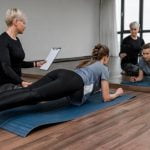Engaging in regular exercise and maintaining physical fitness are essential components of a healthy lifestyle. However, the cost associated with exercise and fitness programs can have a significant impact on an individual’s willingness and ability to participate. In this article, we will delve into the question: does price affect use of exercise and fitness?
We will explore the psychological factors at play when it comes to cost, examine affordable options for staying active, and consider the accessibility of exercise facilities and classes. Additionally, we will analyze the impact of expensive fitness programs and equipment on participation, compare the cost of home workouts versus gym memberships, and discuss strategies for making exercise and fitness more affordable for everyone.
The psychology of price is a fascinating subject that influences people’s behaviors in various aspects of their lives. When it comes to exercise and fitness, individuals often make decisions based on the perceived value of what they’re paying for.
The cost of gym memberships, personal training sessions, or fitness classes can weigh heavily on someone’s decision to commit to a regular workout routine. Moreover, people may also equate higher price tags with better quality, causing them to opt for pricier options despite more affordable alternatives being available.
Staying active doesn’t have to break the bank. There are numerous affordable options for exercise and fitness that can accommodate even the tightest budgets. From outdoor activities like running or hiking to low-cost home workout routines, there are plenty of ways to engage in physical activity without spending a fortune. In the following sections, we will explore these budget-friendly alternatives while also delving into how expensive fitness programs and equipment can create barriers to participation.
The Psychology of Price
The cost of exercise and fitness activities can have a significant impact on people’s participation and motivation. The psychology of price plays a crucial role in influencing individuals’ decisions when it comes to engaging in physical activities. Understanding the factors that influence people’s perceptions of the cost of exercise and fitness can provide insight into creating more accessible and affordable options for everyone.
One reason why people are influenced by the cost of exercise and fitness is the perceived value of what they are paying for. When individuals invest a significant amount of money in a gym membership or fitness program, they may place greater value on their commitment to their health and wellness. On the other hand, if an activity is perceived as too expensive, individuals may be deterred from participating, believing that it is not worth the cost.
Another psychological aspect of price is the concept of scarcity. When a particular fitness class or program is priced higher or promoted as exclusive, individuals may perceive it as more desirable due to its limited availability. This can create a sense of urgency and drive individuals to prioritize and invest in these activities, even if they come at a higher cost.
Moreover, the social influence of price plays a role in shaping people’s attitudes towards exercise and fitness. For example, if expensive workout gear or trendy fitness classes are associated with status or social acceptance, individuals may be inclined to invest in these activities as a way to fit in or keep up with societal norms. This social pressure can significantly impact participation in certain types of exercise and fitness based on their perceived monetary value.
- Factors that influence people’s perceptions of the cost of exercise
- Perceived value
- Scarcity
- Social influence
- The impact of pricing strategies on individual motivation
- Creating value perception
- Addressing scarcity mindset
- Recognizing social influences
- Strategies for making affordable options more appealing
- Promoting inclusivity
- Highlighting benefits over cost considerations
Affordable Options for Exercise and Fitness
Exercising and staying fit does not have to break the bank. There are many affordable options for individuals who want to stay active on a budget. Here are some ways to prioritize fitness without spending too much:
- Outdoor activities: Hiking, running, and biking are great ways to stay active without the need for a gym membership or expensive equipment. These outdoor activities allow individuals to explore nature while getting their daily dose of exercise.
- Bodyweight exercises: Strength training can be done using only your body weight. Exercises such as push-ups, squats, and lunges can be done at home without the need for costly equipment.
- Fitness apps and online workouts: Many affordable or even free fitness apps and online workout platforms offer a wide variety of exercise routines that can be done at home with minimal equipment. This option provides convenience and cost-effectiveness
In addition, community centers and local parks often offer low-cost or free fitness classes such as yoga, tai chi, or aerobics. These options provide social support and guidance from fitness instructors without the high price tag. With these affordable alternatives, individuals can make exercising and staying fit a priority without breaking the bank.
Ultimately, there are plenty of budget-friendly options available for those seeking to stay active through exercise and fitness. By exploring these affordable alternatives, anyone can incorporate physical activity into their daily routine regardless of their financial situation.
The Impact of Expensive Fitness Programs and Equipment on Participation
Barriers to Access
One of the primary ways that expensive fitness programs and equipment affect participation is by creating barriers to access. High costs can make it difficult for individuals, especially those with lower incomes, to afford gym memberships, personal training sessions, or specialized fitness classes. This can result in a lack of motivation to participate in regular exercise or fitness activities.
Additionally, the cost of high-end fitness equipment such as treadmills, elliptical machines, and weight sets can be prohibitive for many people. This limits their ability to create a home gym environment which then hinders their ability to engage in consistent physical activity.
Exclusion of Certain Demographics
Expensive fitness programs and equipment can also contribute to the exclusion of certain demographics from participating in exercise and fitness activities. Individuals from marginalized communities who may not have the financial means to afford expensive programs or equipment are often left out of opportunities for physical activity. This can contribute to disparities in health outcomes between different socioeconomic groups.
Furthermore, pricey fitness options can disproportionately affect older adults on fixed incomes or individuals with disabilities who may require specialized exercise programs or adaptive equipment. The lack of affordable options can discourage these populations from engaging in regular physical activity, leading to negative impacts on their overall health and well-being.
The Role of Accessibility in Exercise and Fitness
The accessibility of exercise and fitness facilities and classes is heavily influenced by price. The cost of gym memberships, fitness classes, and personal training sessions can be a significant barrier for many individuals. According to a study published in the Journal of Health Economics, higher membership fees are associated with lower gym attendance, particularly among low-income individuals. This demonstrates the real impact of price on access to exercise opportunities.
Furthermore, the location of fitness facilities also plays a role in accessibility. Research has shown that low-income neighborhoods tend to have fewer quality exercise options available compared to more affluent areas. This disparity further limits access to exercise for those who may already be economically marginalized.
To address these challenges, some communities and organizations have implemented initiatives to make exercise and fitness more affordable and accessible. These include subsidized gym memberships for low-income individuals, free or low-cost community fitness classes, and programs that provide financial assistance for participation in sports leagues or recreational activities. These efforts aim to level the playing field and ensure that everyone has the opportunity to lead an active lifestyle regardless of their financial situation.
| Impact | Data |
|---|---|
| Lower gym attendance associated with higher membership fees | Journal of Health Economics study |
| Lack of quality exercise options in low-income neighborhoods | Research findings |
| Initiatives for affordable and accessible fitness options | Community programs and subsidized memberships |
Comparing the Cost of Home Workouts Versus Gym Memberships
The cost of exercising and staying fit can vary greatly depending on the type of workout and location. One popular debate is whether it is more cost-effective to exercise at home or join a gym with a membership. When comparing the two options, it is important to consider factors such as initial investment, monthly expenses, convenience, and accessibility.
Gym memberships often require an initial investment in the form of an initiation fee, which can range from $50 to $200, in addition to the monthly dues. On average, gym memberships in the United States cost around $58 per month. However, this cost can fluctuate based on location and the amenities offered by the gym. Some gyms may offer discounts for longer commitment periods or reduced rates for students and senior citizens.
On the other hand, home workouts require an initial investment in equipment such as dumbbells, resistance bands, and yoga mats. According to a study by RunRepeat.com, the average cost of setting up a home gym is around $1550. However, once these items are purchased, there are no monthly fees associated with working out at home. In addition, home workouts eliminate commuting time and provide greater flexibility in terms of scheduling exercise sessions.
Strategies for Making Exercise and Fitness More Affordable for Everyone
Community and Government-Funded Programs
One effective strategy for making exercise and fitness more affordable for everyone is the implementation of community and government-funded programs. These initiatives can include free or low-cost fitness classes, access to recreational facilities, and subsidies for individuals who may not be able to afford traditional gym memberships. By offering these types of resources, more people have the opportunity to engage in regular physical activity without the barrier of high costs.
Corporate Wellness Programs
Another approach to making exercise and fitness more accessible is through corporate wellness programs. Employers can play a pivotal role in promoting physical activity by providing on-site fitness facilities, organizing group workouts, offering incentives for meeting activity goals, or subsidizing employee gym memberships. Not only does this benefit the overall health and well-being of employees, but it also contributes to a more active and engaged workforce.
Promotion of Affordable at-Home Workout Options
Encouraging the use of affordable at-home workout options is another key strategy for making exercise and fitness more accessible. Companies in the fitness industry can develop cost-effective exercise equipment, online workout subscriptions, or mobile apps that cater to individuals with limited budgets. By promoting these alternatives, individuals who cannot afford traditional gym memberships or expensive fitness classes can still maintain an active lifestyle from the comfort of their own homes.
Conclusion
In conclusion, the relationship between price and exercise/fitness is a complex one that has significant implications for individuals and society as a whole. As explored in this article, the psychology of price plays a crucial role in influencing people’s decisions when it comes to engaging in physical activity. Affordable options for exercise and fitness are essential for ensuring that everyone has access to opportunities for staying active, regardless of their financial situation.
The impact of expensive fitness programs and equipment on participation cannot be ignored, as cost can be a significant barrier for many individuals. Therefore, it is crucial to consider strategies for making exercise and fitness more affordable for everyone. This may include initiatives such as subsidized gym memberships for low-income individuals, community-based exercise programs, and the promotion of cost-effective home workout options.
Looking ahead, it is clear that addressing the relationship between price and exercise/fitness will be essential for promoting public health and well-being. By making physical activity more accessible and affordable, we can work towards creating a society where everyone has the opportunity to lead an active and healthy lifestyle.
It is our hope that this article has shed light on this important issue and will inspire further discussions and actions aimed at creating a future where price is not a barrier to exercise and fitness.
Frequently Asked Questions
How Does Income Affect Fitness?
Income can affect fitness in several ways. Higher income individuals may have more resources to invest in gym memberships, personal trainers, and specialized equipment, allowing them to maintain a higher level of fitness.
On the other hand, lower income individuals may struggle to afford these luxuries and may have limited access to healthy food options and safe exercise environments. Additionally, time constraints related to working multiple jobs or long hours can also impact an individual’s ability to prioritize fitness.
How Does Fitness Affect the Economy?
Fitness has a significant impact on the economy as well. When people are fit and healthy, they tend to have lower healthcare costs and are more productive at work.
This reduces overall healthcare spending for the country and increases the labor force participation rate. Moreover, the fitness industry itself contributes significantly to the economy through gym memberships, sports apparel sales, and employment opportunities for fitness professionals.
What Are the Costs of Exercise?
The costs of exercise can vary greatly depending on an individual’s preferences and circumstances. Some people choose costly gym memberships, personal training sessions, or specialized classes like yoga or Pilates. Others prefer outdoor activities like running or hiking that come with minimal expenses.
However, there are also hidden costs such as proper workout attire, footwear, equipment maintenance, and potential healthcare expenses related to injuries if not done safely and responsibly. While regular exercise does have associated costs, its long-term benefits often outweigh this initial investment.

Passionate about providing useful information to anyone with an interest in the field of Personal Training, I strive to pass on to our readers quality information and to answer any questions about Personal Trainers, the work they do and how to become one.





